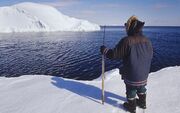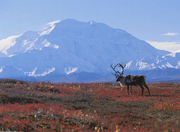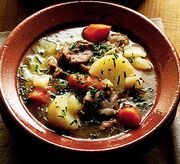| Orðevnnvot The Northland
| |
|---|---|
 Flag | |
|
Motto: Balance and Strength | |
 | |
| Capital and Largest City |
Biellerudorn (Biellëüddoen) |
| Official languages | Northlandish |
| Ethnic groups | Northlanders |
| Demonym | Northlandic |
| Government | Constitutional Republic |
• President |
Kåoliott Vauä |
• Head of Senate |
Epattä Epattä |
| Major Dates | |
• Unified |
200 BCE |
• Constitution Ratified |
January 3, 1933 |
| Population | |
• 2010 estimate |
3,500,000 |
The Northland (Northlandish: orðevnnvot) is the northern most country in a region known as the Ninelands. Most of the Northland is situated directly below the Arctic Circle. It is surrounded by ocean to the north, west, and east. Communities along its southern border are the most developed, as trading with border countries is easier and has been custom for hundreds of years. The population north of these communities organizes themselves into tribal governments recognized by the national system.
History[]
The history of the Northland is largely documented through oral tradition. For the most part, it is difficult to distinguish true fact from legend. According to legend, the tribes of the Northland have been unified as one country since shortly after the beginning of time. Historians consider the time of the unification to be 200 BCE. After this time, the Northland considered itself one country of many tribal governments, united in the face of foreign danger while fighting internal battles amongst its own tribes.
On January 3, 1933 a constitution was ratified, creating the Northlandic Republic. Since the beginning of the 20th century, inter-tribal turmoil has roughly ceased.
Inhabitants[]
A majority (93%) of the Northland population are ethnicnally Northlandic people.

Ethnic Northlander man of typical stature.
These people are typically short and stocky, with olive-colored skin, light hair, and broad features. It is common for Northlandic people to have complete heterochromia of the eye, a genetically recessive trait creating eyes of two distinct colors. Northlandic people are usually born with strawberry-blond hair which turns medium- or dark-blond at puberty.

An ethnic Northlander.
The remaining 7% of Northlanders are migrant traders and their families or their descendants. In the case of the latter, many Northlanders with foreign trader ancestors also have Northlandic blood. After a few generations, multiethnic Northlanders almost never have heterochromia, as it is a recessive trait that would be dominated by outside genes.
The Northlandish language is the language of 100% of the northern tribes, and 97% of the southern cities, with the remaining 3% speaking trading creoles as their first langauge or being of foreign nationality. A majority of these traders live in the southwest, where trading is facilitated by the southern peninsula and bay.
Geography[]

The Northlandic southern peninsula.
Most of the Northland is situated directly below the Arctic Circle. The country's southern-most point is located on an island off of the southern peninsula. The mainland is surrounded by ocean to the north, west, and east.
Permafrost is the main landcover (90%) and is covered by snow and ice most of the year. Sea ice jets from the northern coasts and extends into the arctic circle.
Wildlife[]
Mammals

Polar bear crossing sign in Northlandish.
Arctic wolf (Canis lupus arctos)
Beluga whale (Delphinapterus leucas)

Wild reindeer in its native tundra environment, Northlandic southern peninsula.
Mule deer (Odocoileus hemionus)
Orca (Orcinus orca) (balïn)
Polar bear (Ursus maritimus) (oüvn)
Wild reindeer (Rangifer tarandus) (kåoliott)
Fishes
Greenland shark (Somniosus microcephalus) (žvalokk)
Society[]
Northlandic society is traditionally matriarchal. Women, especially mothers, are the traditional assumers of leadership roles in government, religion, and warfare.
The current president of the Northland, Kåoliott Vauä, and the Head of Senate, Epattä Epattä, are both female. In tribal society, chiefs, shamen, and hunters are almost always women. Men occupy caregiver, family, medical, and educator roles.
While it is not uncommon for women to take battle roles in warfare, it is more likely that these positions will be taken by young, usually unmarried men. Tactical and strategic positions are reserved for men (15%) and women (85%) with families, whose decisions are seen as wiser and less selfish.
Government[]
Northlandic citizens in the north two-thirds of the country have organized themselves into tribal governments since prehistory. In the south and on the southern peninsula, this tribal system gave way to more capitalist cities in the 15th and 16th centuries as trading with border countries became more institutionalized.
The average northern tribe is made up of 1400 members, but they may be anywhere from 20 to 10,000 members. A chief is selected by the previous chief based on character, leadership, and diplomacy skills. Chiefs usually reign until death.
Under the Northlandic constitution, the country is a republic. However, it also allows for a tribal system to remain in place in the north. Where tribes exist, the chief is allowed one vote to represent the entire tribe in national matters. The constitution grants tribes the freedoms to self-govern and decide how the chief arrives at his/her decision. For example, in the northwestern tribes, it is common to allow voting within the tribe, essentially installing a direct democratic system. Moving east, tribes tend to be more selective about who can vote (only warriors, only women, only mothers, etc.). In the northernmost regions, tribes tend to be autocratic. The creation of a new tribe is allowed by the constitution.
Religion[]
Traditional Northlandic religion focuses on the balance of two forces: order and chaos. Each of these forces is governed by a godruler; order is governed by a polar bear god and chaos by a wild reindeer god.
Food[]
Heart stew (rokknmnjkülumn) is a thick stew traditionally made from the

Heart stew (rokknmnjkülumn).
heart of a polar bear. The dish is usually reserved for times of great change and renewal. From this custom comes the idiom, "to make the stew," (ägjeðrüürokknä) meaning to begin anew. More recently, the dish has been made from the hearts of other animals, as more Northlanders come to understand the negative ecological impacts of hunting apex predators like polar bears.
Vegetarianism is uncommon among the northern Northlandic tribes, however trading in the south has introduced foreign ideas and customs, and it is possible to encounter vegetarian families in the southern cities. These families often prepare traditional dishes with vegetable substitutes. A tofu-like substance, introduced in the 19th century by traders, is difficult to find, but may be used in these dishes as well.
